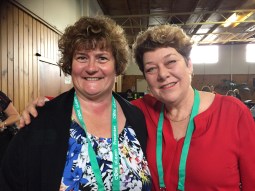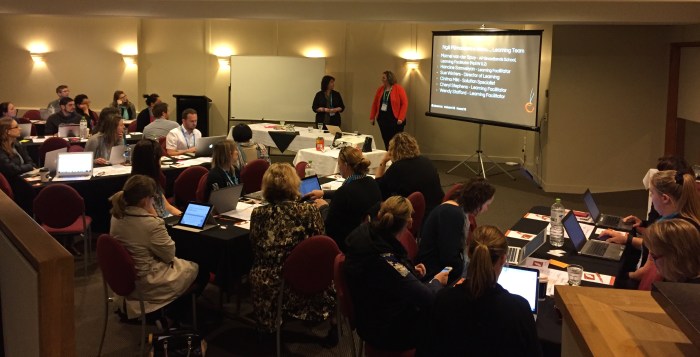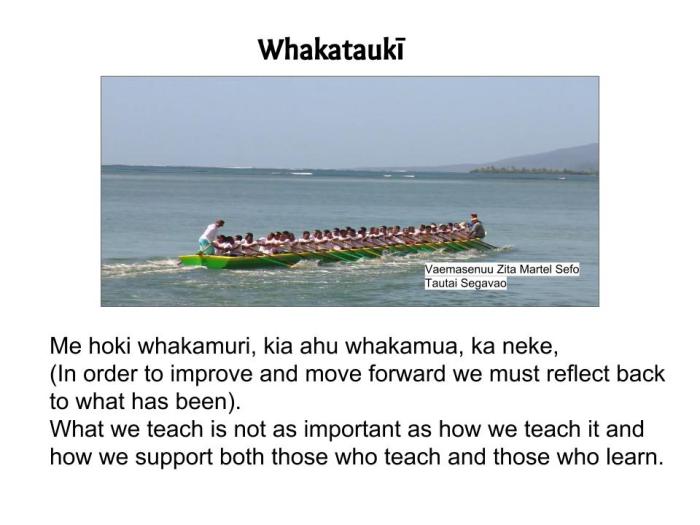
“Looking at the past must only be a means of understanding more clearly what and who they are so that they can more wisely build the future.” Paulo Freire
ULEARN 2016

CORE Education’s annual professional learning and development conference for educators took place on 5 -7 October 2016 at Rotorua’s Energy Events Centre. Rotorua was a blaze of colour with the tulips out in all their glory. In addition the centre had beautiful nightlight displays.

The three conference strands were:
The key themes permeating throughout the conference were
- Connect by sharing knowledge and ideas
- Collaborate by working together and developing relationships
- Innovate through innovation and sustainability
I have taken each keynote speaker and made links with all the discussion based on the conference themes and then highlighted a key takeaway from each presentation.
The Keynote speakers were:
- Keynote #1: Larry Rosenstock
- ‘It’s Time to Change the Subject’
- Collectivelearning not autonomous learning.
- Collaborativelearning not isolated learning
- Innovatelearning through the structure of their work.
- ‘It’s Time to Change the Subject’
- Keynote #2: John Couch
- ‘New Dimensions in Learning’
- Connectour students. Engagement is key. If students engage then they will succeed. Technology aids engagement.
- Collaborateby ensuring we MAXIMISE the potential of technology to amplify schools and education.
- Innovateby providing opportunities for our students to make something that will change the world.
- ‘New Dimensions in Learning’
Many learning barriers of today are not set by system but by teaching practices.
- Keynote #3: Michael Fullan (Note: I missed this session #SadFace)
- ‘Early lessons from implementing New Pedagogies for Deep Learning’
- Connectusing New, meaning the new knowledge and relationships between the teacher, student and whānau
- Collaborate using education as societal change agents
- Innovate because we are wired to create

- ‘Early lessons from implementing New Pedagogies for Deep Learning’
Teachers as agents of change.
- Keynote #4: Karen Spencer
- ‘Beyond the echo chamber: The extraordinary possibilities of a networked profession’
- Connectwith the past because future focused ‘solutions’ are just someone else’s good ideas.
- Test lightly and collaborativelyand use our curriculum documents to guide us.
- Innovatefrom an informed position
- ‘Beyond the echo chamber: The extraordinary possibilities of a networked profession’
Our one job is to keep the fear out of school.
Now I could write a lot more about each session however you can already read a more detailed summary from http://www.events.core-ed.org/ulearn/keynote-speakers. In addition there are links to video clips shown.
I was extremely grateful to Core Education for the earlier presentation time slot because this allowed me to relax and enjoy the rest of the conference.
Sharing is caring — learning is giving back to the community
Presenter: Sonya Van Schaijik

I gave a session which was partly narrative and partly a workshop. Here are my slides. I have already received Feedback for my next session. There were some constructive suggestions that are helpful for my learning so thanks to those of you who took the time to give me feedback.
Spotlight session: Leadership for online global collaboration: from pedagogy to cosmogogy
Presenter: Julie Lindsay

I attended a session from one of the spotlight presenters and this was Julie Lindsay. Julie’s and my history go back quite a way and I joined her session partly to acknowledge the massive influence she has had on me personally as an educator especially in focussing on whanaungatanga in everything that I do. You can check out the link to her session here. What is a global leader?
The key message I took from her session was: ‘Leaders must demonstrate and model collaborative practices to support pedagogical change.’
Julie wrote a book titled ‘The Global Educator.‘ If you are looking for me I feature on page 100. (#JustSaying.) A lot of what she writes about me is the #EdBookNZ collaborative teachers’ book that happens each year as part of #CENZ month. If you want to know more, do check out her book and look out for this year’s team .
Research and inquiry Symposium: Play and creativity
Presenter: Christine Alford, Keryn Davis, Caroline Bush
The key takeaway I took from this session was: Collect the stories of our learners.
CoL round table: action planning
Presenter: Derek Wenmoth
I joined several round table discussions and used the opportunity to think about an action plan for implementing ideas in our ACCoS group. We were given an excellent readable document that highlighted areas for discussion for me to share with my CoL.
(Darn, @AionoManu I forgot our selfie when we were working together.)
Play is not fun
Presenter: Caroline Bush
Caro share a narrative of her journey as an efellow16
The key takeaway I took from Caro’s session was: Give the learners permission and freedom to leave. Focus on the progress. Bring in blocks during reading time.

Building capability through future focused learning
Presenter: Marnel van der Spuy, Hancine Samvelyan
We took part in collaboration as a process.
The key message I took away was: Fear and passions come together for discussion. Experts and apprentices balance.
Here is the link to our collaborative document.

So overall what have I learnt from attending and presenting at Ulearn this year?
Connections continue to drive what I do because I strongly believe that before you can collaborate you must make connections.
I formed deeper connections with two teachers who braved ULearn with me this year. I give them a shout out. They are @HannahDavey01 and @MissSMorrison1. They outdanced me on the dance floor and nearly out tweeted me. I loved the way they took the learning all on board and just got involved. They even featured on the Core Education Blog.

I reconnected with heaps of tweeps both face to face and virtually using #ulearn16 and #notatulearn16. Out of all the exhibitors present I took great delight in visiting Stand 60 which was Essential Resources stand.
I stood back with pride at seeing my book with Pam Hook up there on the stand. (Just in case you are looking for a copy of SOLO Taxonomy and English Language Learners-here is the link.) Being true to my island heritage I had a quiet chuckle at how fabulously bright it was and wondered if we should have stuck a great big hibiscus on it as part of the background. Maybe we will do that for our next book.

I collaborated with many educators both new and seasoned using digital tools and hands on tools such as Padlet, Google Docs, Twitter, Periscope. I am just conscious of driving the collaboration to a deeper level and push past the coblaboration stage.
I took away some innovative ideas to trial with current CoLs that I work with. One tool is Arinui that I am keen to explore further. Another is the upcoming Flat Connection Project I am project leading under the guidance of Julie Lindsay. A further idea is using the SOLO Taxonomy vocabulary that I created with Pam Hook last year to structure Oral language with our English Language Learners at Newmarket School.
To finish with just a MASSIVE shout out to @newmarketschool and the Board of Trustees for supporting our professional learning with this trip to Ulearn16. Now to our teachers we are coming back with some ideas that we are keen to trial. However ULearn doesn’t change the world, the experience changes #NPSFab teachers and we have come back changed.
 |
 |
I began this post with a quote from John Dewey and end with this whakataukī from my session. 
Let us forge a pathway to the future and acknowledge our journey.







